Recognize response fluctuations
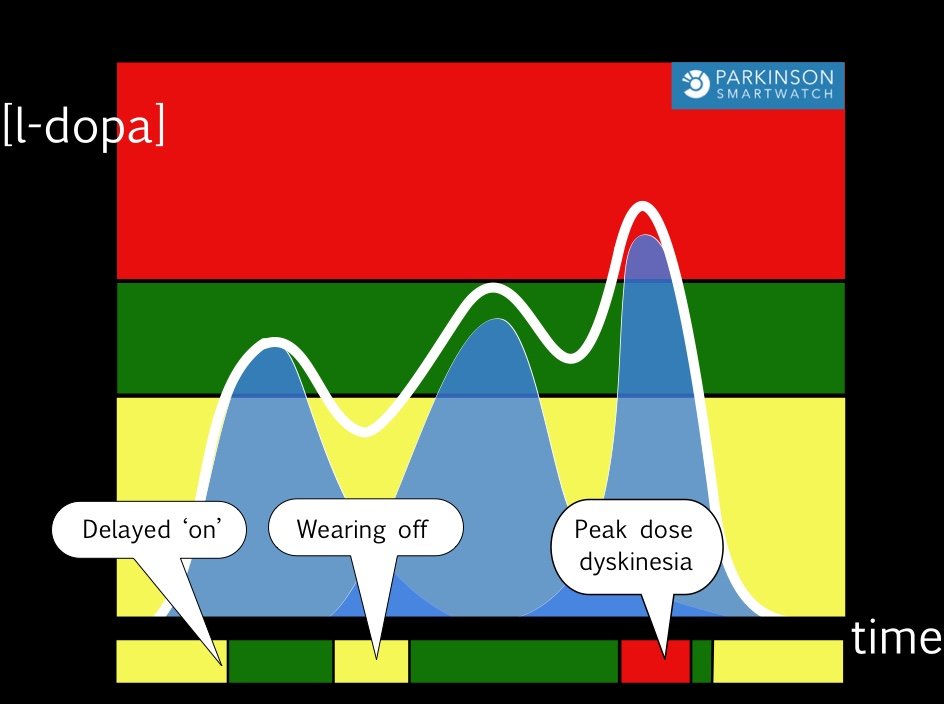

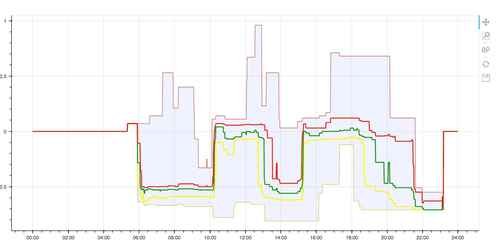
These 2 charts are of the same patient. The top shows motor fluctuations at 3 different days. The bottom is the AVERAGE of a month. The diagnosis is straightforward, and clear at a glance: The first dose is too low, called 'delayed on'. Dose 2 and 3 are too low to get a sustained effect until the next dose, called 'wearing off' or 'end of dose deterioration'.
The average shows almost a square wave of alternating on and off periods.
Wearing off may be more subtle as in the next case:

This patient asked us to stop levodopa. Each time he takes a pill, he feels worse. You can tell from the chart why he has this impression, because the purple squares coincide with the start of his off-periods. But the impression that levodopa causes the bad hours is not correct. It is the exact opposite: the yellow wearing off periods occur at the overlap area of 2 dose curves: the previous dose in declining, while the new dose is not resorbed enough yet. So, increasing the dose is the solution, not stopping!

This patient asked us to stop levodopa. Each time he takes a pill, he feels worse. You can tell from the chart why he has this impression, because the purple squares coincide with the start of his off-periods. But the impression that levodopa causes the bad hours is not correct. It is the exact opposite: the yellow wearing off periods occur at the overlap area of 2 dose curves: the previous dose in declining, while the new dose is not resorbed enough yet. So, increasing the dose is the solution, not stopping!
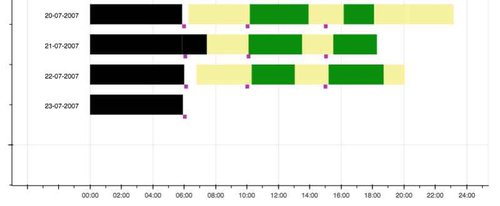
Take care, below is a percentage chart, where all yellow is grouped together (always at the left) , so time is not shown anymore. This is an excellent way to determine total off and thus quality of life, but this is not 'delayed on'.


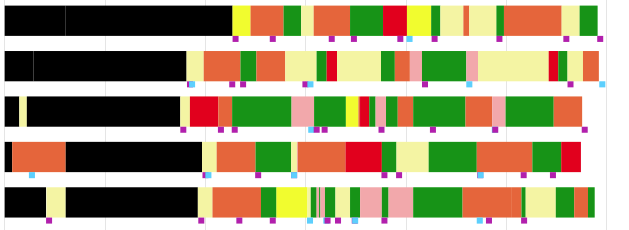
Dopaminergic dysregulation syndrome (DDS) is characterized by craving for dopaminergic medication, more than needed to control PD. A diary with fluctuations showing many moments of intake, which happen sometimes close together in time, may suggest this diagnosis. Asking about presence of a mood disorder ( like depression, anxiety, hypomania or euphoria), behavioral disorder (gambling, shopping or hypersexuality, aggression, or social isolation) or an altered perception about the effect of medication may support this diagnosis. The management is quite complex, but the Parkinson smartwatch diary may be supportive in finding a better treatment strategy, e.g. without dopamine-agonists.
Here is another DDS example with a lot of dyskinesia. Although only a few pill moments are recorded, irregular intake is clear.
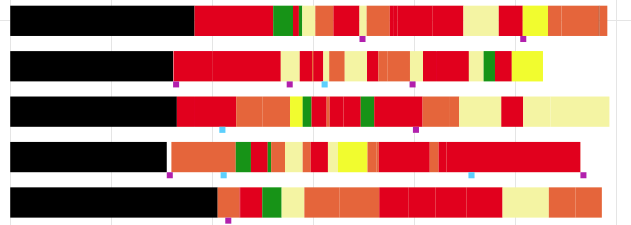
Meals contain proteins, which are digested by proteases to amino-acids. These compete with levodopa for gastrointestinal uptake. For most patients, taking levodopa more that an hour in advance of a meal is a way to prevent interference. Check simultaneous occurrence of blue boxes (meals) and purple boxes (pills) to detect this problem, especially in patients with off-periods. In this example the third dose is resorbed less, because it was taken with a meal. The result is a yellow off-period.
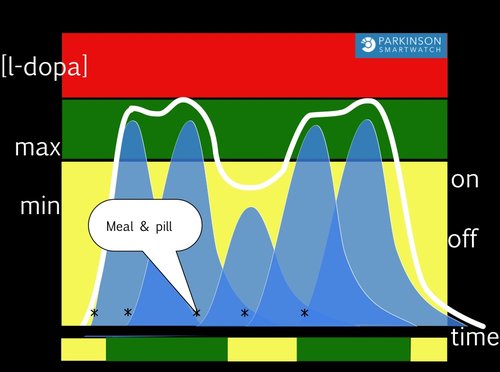
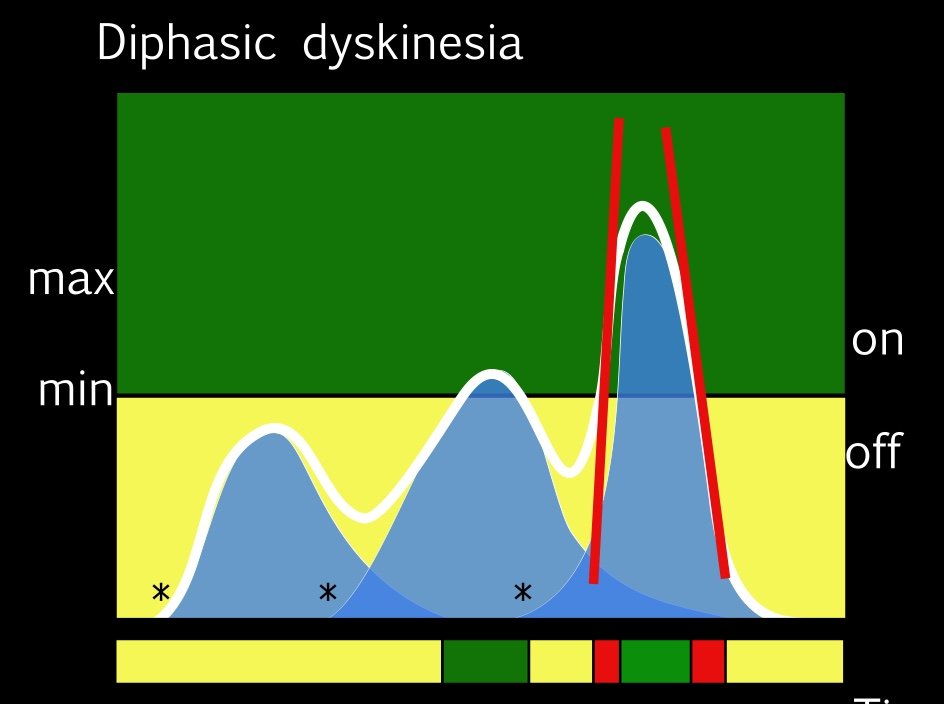

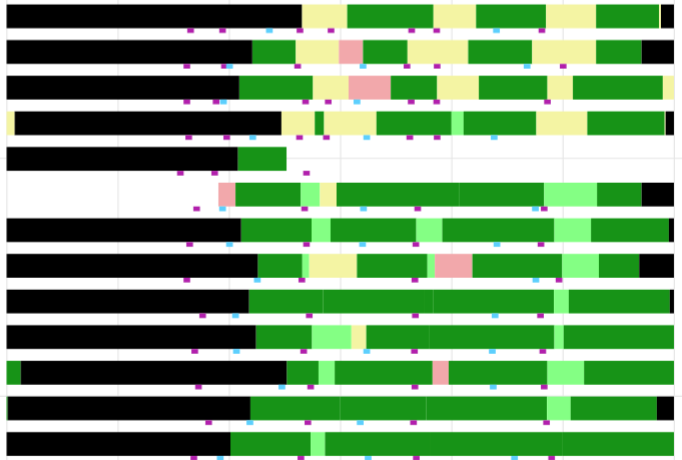
Peak dose dyskinesia occur at the top of the levodopa curve.
